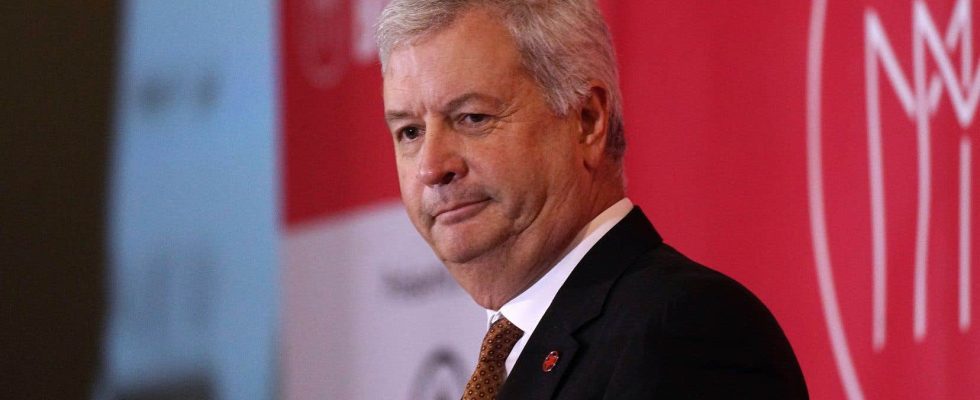Legislators reprimanded Air Canada’s CEO on Monday for his “shocking” and “scandalous” failings towards disabled passengers.
At a House of Commons committee hearing on services for Canadians with disabilities, Air Canada boss Michael Rousseau faced an avalanche of questions based on reports of mistreatment of passengers over the past year.
Conservative vice-president Tracy Gray cited several “shocking” incidents: “A freight elevator fell on a passenger’s head, disconnecting her respirator; Air Canada forgot Canada’s chief accessibility officer’s wheelchair on cross-Canada flight […] and a man was dropped and injured when Air Canada staff did not use an elevator as requested. »
The main problem is inconsistency.
In August, a man with spastic cerebral palsy was forced to drag himself off a plane for lack of help. A situation that Bloc Québécois MP Louise Chabot described as “scandalous”.
New Democratic Party (NDP) Disability Inclusion Critic Bonita Zarrillo asked Rousseau if he had ever had to crawl down an airplane aisle or out on a food cart — in reference to the situations described — he replied “no, of course not”.
“We make mistakes,” he said.
Mr. Rousseau highlighted an accelerated accessibility program announced in November, as well as new measures aimed at improving the travel experience for hundreds of thousands of passengers with disabilities.
Last week, the carrier formed an advisory committee of customers with disabilities and implemented a program in which a lanyard worn by travelers will alert staff that they might need help.
“The vast majority of customers who request accessibility assistance from Air Canada have a good experience. There are exceptions. We assume responsibility for these exceptions,” admitted Mr. Rousseau. He apologized last fall for the airline’s accessibility issues.
Mme Zarrillo suggested the shortcomings run deeper than occasional missteps, saying Air Canada’s “corporate culture” and lack of federal enforcement explain the mistreatment, even after regulatory reforms over the past five years. years.
Loopholes in the law
Conservative MP Rosemarie Falk asked Mr Rousseau if the airline was complying with all regulations. He initially avoided a firm answer by replying: “I can’t answer that question at the moment.”
After he finally responded with a yes, Mme Falk pointed out that the airline’s accessibility issues amid alleged compliance with the law suggested “major flaws” in the Accessible Canada Act, passed in 2019.
However, Liberal MP Peter Fragiskatos said the problem seemed to lie more in the day-to-day implementation of these policies than in the rules or approaches coming from senior management.
He cited Jeff Preston, associate professor of disability studies at King’s University, who wrote that Air Canada has up-to-date accessibility frameworks, but that “none of these policies are adequately transferred from legal and corporate sector to the front line.”
Mr. Rousseau seemed to agree with this statement: “The main problem is inconsistency. »
In December, the Canadian Paralympic Committee, along with some para-athletes, demanded better transportation to competitions abroad.
The call followed repeated complaints from Paralympic athletes about damaged or broken equipment, in addition to delayed flights for Canadian competitors heading to the Parapan American Games in Chile in November.
Not very concrete actions
Last month, Air Canada appealed a decision by the country’s transportation regulator, which aims to improve accessibility for travelers with disabilities. If Air Canada were to win its case, the ruling would overturn the obligation to fully accommodate passengers whose wheelchairs are too large to fit into the plane’s hold.
As part of its three-year accessibility plan, Air Canada has committed to implementing measures ranging from the creation of a director of accessibility to priority boarding of passengers who request assistance.
The Montreal company also aims to implement annual and recurring training on accessibility – such as how to use a transport support – for its approximately 10,000 employees at airports. It also plans to include mobility aids in an application to track baggage.
Flight delays – a persistent problem for Air Canada, which ranked last in on-time performance last year out of 10 major North American carriers – affect people with disabilities more, Rousseau acknowledged. He said the company’s latest steps were aimed at “helping to alleviate this concern.”
Accessibility advocates have highlighted gaps in Canada’s Accessible Act that they say allow problems to persist in areas ranging from consultation to support protocols.
Heather Walkus, who heads the Council of Canadians with Disabilities, noted a lack of detail on how to train staff. She also cited a rule requiring federally regulated businesses to involve people with disabilities in developing policies, programs and services – a “regulation as stiff as butter.”
“You can send an administrator to Tim Hortons to talk to someone in a wheelchair and you consulted with the disability community. This is a formality to be crossed off the list,” she told The Canadian Press in November. The group she leads has not been contacted by Air Canada about its new accessibility plan, she said.
